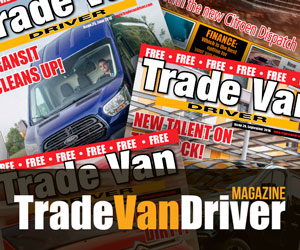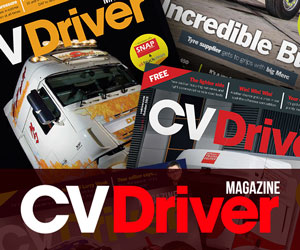
With the theme of ’10 years of evolving best practice’, the third annual FORS Members’ Conference took place in October. Speakers covering a wide range of topics were joined by 450 FORS accredited members in the audience who were keen to find out the latest developments within FORS.
This year’s event saw an expanded exhibition, with delegates and speakers given the opportunity to interact with 35 exhibitors and three Affinity Partners during the breaks in proceedings.
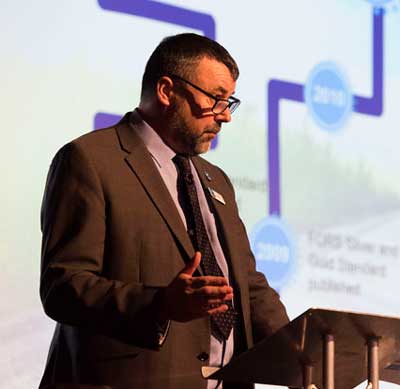
John Hix, FORS concession director
10 years and counting
The opening presentation was given by John Hix, FORS concession director and Paul Wilkes, business services manager at FORS. They took a trip down memory lane, recounting many of the FORS milestones that had been achieved since 2008, when Version 1 of the FORS Standard – or specification as it used to be called – was published.
Hix recalled that the first company to register was PHS, but that Hanson was the first company to achieve Bronze accreditation. “Silver and Gold were launched in 2009 with just two requirements – today there are eight at Silver and nine at Gold,” added Wilkes. Reassuring the audience that FORS wasn’t standing still, Hix revealed that an accreditation scheme for driver agencies is being piloted, while it is “looking to pilot, with a vehicle lease company, an accreditation scheme for those who want to provide lease vehicles”.
How training is changing
The next speaker was Emma Jennings, director of education at CILT, who gave a reflective presentation about the workforce of the future. Asking the audience if they thought they would live to 100, she revealed that for a 57-year-old male there was an 11 per cent chance, while a 27-yearold female had a 27 per cent likelihood.
The point she was making was that careers are going to be longer in the future. “This will put pressure on pensions and our social care systems. The idea of working hard and then living a peaceful retirement on the golf course or in the Algarve is not a realistic prospect for people in their 20s and 30s,” she warned.
Developing transferable skills – such as communication, time-management, leadership, project management – were important, but it was as important to have one eye on the future, said Jennings. “We expect our medical professionals to keep up to date on the latest medical advances, so why should it be any different in the transport sector?” she asked.
We expect our medical professionals to keep up to date on the latest medical advances, so why should it be any different in the transport sector?
Ground-up recruitment plans
Next up was Peter Kay, head of learning at Tarmac, who stressed that apprenticeships are not just for young people. He explained that – like FORS – his company had gone through a great deal of change (including ownership) in the past 10 years and although Tarmac has a history of 150 years, it is now a new company.
These changes had, he said, “given us the opportunity to look at learning in a different way. We have 300 sites in the UK, which gives us challenges when training the workforce, but also opportunities because of UK coverage and the ability to attract people from all over the country”.
“We needed to attract talent – and apprenticeships were a great way of doing it,” he said. “We developed four apprenticeships standards that are relevant to our industry and in a career pathway from base level to junior management – with a senior management level to be added in due course.”
He urged the audience to think about the roles that would add value to the business, now and in the future, and work together on the standards and support staff in their education.
Asking the awkward questions
Andrew Drewary, road risk manager at CILT – and a collision investigator for 18 years – has analysed more than 30,000 collisions, so was well placed to offer advice on how to deal with conversations with drivers in the event of a collision or incident.
One of the main issues that came out of his analysis was driver health and the amount of times that, when interviewed properly, drivers are willing to open up. “You need to educate yourselves in how to deal with this issue,” he told the audience. “It needs to be a collaboration between employer and employee and it is something that will become greater and more important in the future given that the average age of drivers is increasing year on year.
Drewary asked operators to consider their actions when assessing a situation. “If your driver turns up from work and they are smelling of alcohol you wouldn’t let them out on the road.
“If they turn up drinking an energy drink, some wouldn’t question it. But if they turned up yawning, very few would worry about it. That decision could prove costly.
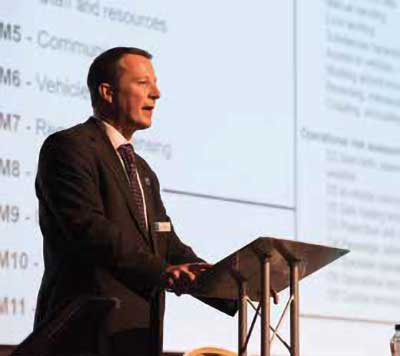
Paul Wilkes, business services manager at FORS
Progress with construction industry safety
Derek Rees, programme director of CLOCS, addressed the audience about where the scheme had come from and what the plans for the future were. Emphasising the severity of the safety issue facing the industry, he revealed that 463 people had been killed or seriously injured in collisions involving HGVs in 2016. Of that number 121 had died within 30 days of the collisions.
Rees revealed that while the new CLOCS standard hasn’t been published, it recognises the progress that the FORS Standard has made and he ensured that CLOCS would follow suit and be updated every two years.
Finally, he drew attention to the changes in the new CLOCS standard for regulators, clients, principal contractors and fleet operators. “This update gives what everyone wanted, which is one national standard for national operations. And the default evidence is FORS, because that is the simplest, smartest and easiest way for fleet operators to demonstrate it.”
In charge of a clean up operation
As national prevention and disruption team officer at the Environment Agency, Mark Thomas has many roles. One of them, he told the audience, was to identify opportunities to reduce environmental crime. “I’m currently working on this project to improve waste duty of care compliance specifically within the haulage industry,” explained Thomas, a former driver and transport supervisor. “I understand the constraints companies like yours face and I believe that by working together and raising awareness, FORS members can be prevented from becoming victims of waste crime,” he told the audience.
“The Environment Agency recognises FORS as a national accreditation scheme that aims to drive up standards and as such, we’ve been working with it for a number of months,” he revealed. He drew the delegates’ attention to new items in the upgraded FORS Standard relating to further environmental protection and standards to raise the bar on waste duty of care.
Speaker of the house
After lunch, delegates were given an insight into what parliament thinks and does about the transport and logistics sectors, from former Member of Parliament (MP) Robert Flello. Now a consultant,
Flello is the founder of the Parliamentary Freight Transport Group and was at the FORS Conference to impart some advice on how the freight industry and operators can best get the attention of Westminster and engage with the decision-makers who can make a difference. Flello explained that the Parliamentary Freight Transport Group was designed to raise the profile of the industry in parliament, featuring those from both sides of the Houses of Parliament and the House of Lords. “We got representatives from the largest multinational businesses to the smallest companies at the other end of the spectrum. It was widely respected by all aspects of the freight sector and, more importantly, by the government itself.
He said the most important thing to do was build relationships with MPs.
“If I was in your position, I would meet with the MPs who have an interest, based on questions they’ve tabled; I’d organise events in parliament to attract interest of those MPs and find hooks that would attract their interest. But beyond that, relationship is key. It is very easy to criticise MPs and peers, but building the relationships pays dividends. This also applies to mayors and councillors.”
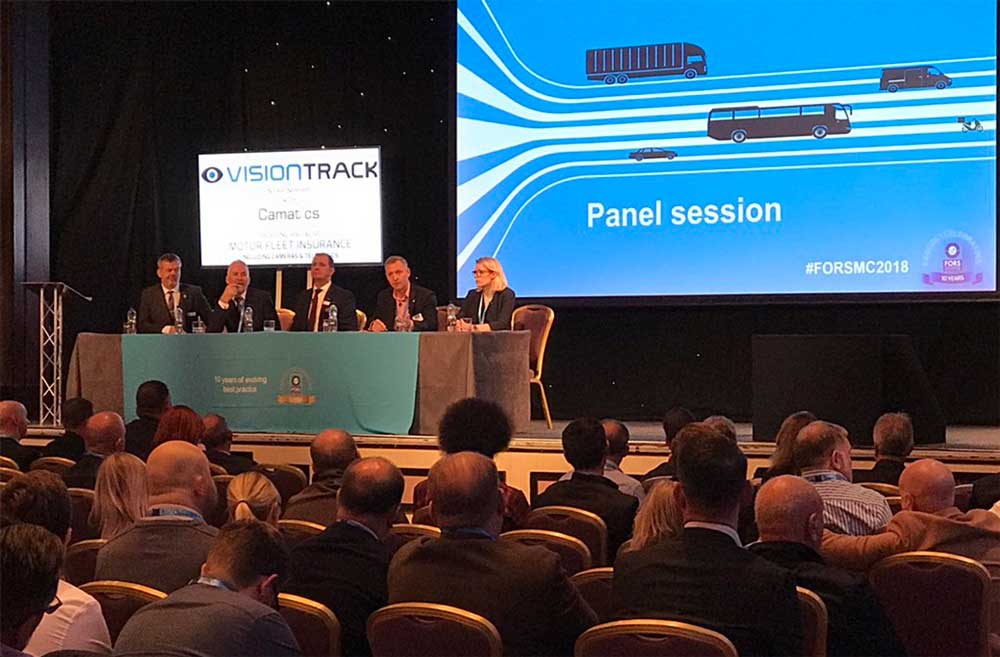
Questions from the audience to the speakers led to some lively debate after each session
Safeguarding you and FORS
Bringing official proceedings to a close, Graham Holder, quality assurance and compliance manager at FORS and Alan Harvey, head of auditing at FORS, explained details of the new version of the FORS Compliance and Enforcement Guidance operator manual.
“As with any quality management systems we should always strive to provide the very best system at all times. We’ve listened to all feedback provided during FORS Practitioner workshops, members regional briefings and we’ve strived to ensure that your voice is heard,” said Harvey.
“Compliance and enforcement within FORS is mandated through the operator manual. Introduced in 2017, it sets out guidance for breaches of compliance and also provides detailed information regarding possible sanctions and a system of fair and consistent compliance and enforcement.”
Details of the new FORS Standard version 5
Arguably the most important and intense part of the conference saw Glen Davies, FORS technical adviser, and Paul Wilkes discuss the key changes to the FORS Standard at all levels. Davies explained that there were seven new requirements, 15 that have been merged into six, one split into two, 27 renamed and one requirement moving from Gold to Silver.
Davies warned the audience not to jump straight into the FORS Standard, but to take the time to read the information around it. “These notes cover the scope of the new FORS Standard, have details about the terminology used throughout, and news about the arrangement around temporary vehicles and drivers, related requirements, templates and resources.”
To start, Wilkes explained the changes to the management section of the Bronze Standard. “Alongside a name change, FORS documentation (M1) now provides a single list of all the policies and procedures that must be evidenced at audit. The policy requirements have been extracted throughout the other requirements to provide a simple list,” he said. “At staff resources (M4) operators need to demonstrate there are sufficient resources appointed across the fleet operation. An organisational chart needs to show the person with responsibility for the fleet operation (M3); health and safety (M8); technical engineering advice (V1); managing fuel and emissions (Champion) (O2); managing road risk (Champion) (O3); managing specialist operations (O5) and managing counter terrorism (Champion) (O7).”
Wilkes then moved onto vehicle fleet (M6), which he said had been an overlooked requirement in previous revisions. “It has been a requirement of the FORS but not actually included in the FORS Standard. M6 now requires operators to maintain a register of the number, type and distribution of all vehicles in scope of FORS accreditation. That includes vehicle registration marks and trailer identification numbers. All risk assessments required through the FORS Standard are listed under health and safety (M8) – divided into health and safety risks and operational risks.”
It was then Davies’s turn to run through the Bronze vehicles section, where the biggest changes are seen in load safety (V5). “It has now been split into five different requirements, depending on the vehicle type that is accredited – HGVs, passenger carrying vehicles, vans, cars or powered two-wheelers.
“For vehicle safety equipment (V6) the challenge is how we gradually introduce the Direct Vision Standard into the requirement, which is potentially London only from next year,” he explained. “We did have to make reference to it, but we couldn’t make it nationally applicable, so therefore we do have a requirement specific to London.” Davies also detailed that tyre management (V7) was a new requirement split from fuel and tyre management (M11).
Bronze driver highlights covered by Wilkes included professional development (D4), which states that members must have completed the security and counter-terrorism eLearning module within the past 24 months and in-vehicle communication (D5).
In this area, Wilkes admitted there had been some debate about what to include, having historically followed the legal requirements, such as allowing the use of hands-free mobile devices. “Good practice is now moving towards the banning of the use of hands-free devices and many organisations already do this. But we felt this was too high a hurdle for Bronze operators to comply with especially as we are moving into other fleet sectors such as van and car.
That said, we use the term ‘should’, which means it’s not mandatory, but it is recommended.”
Another heavily debated area was health and eyesight (D6) around a specific recommendation. “A drugs and alcohol procedure should include drug and alcohol testing that is conducted: pre-employment or the start of a specific contract; routinely, randomly or unannounced; and after involvement in a road traffic collision, incident or near-miss,” confirmed Wilkes.
Wilkes also added that in the Bronze Operations section, passenger safety (O4) is a brand new requirement, applicable to passenger-carrying vehicles and any other vehicle that has a seat – and that counter terrorism (O7) now requires operators to have a policy and supporting procedures in place and to name a Counter Terrorism Champion.
Changes to the Silver requirements were then covered including: professional development (S5); vehicle safety equipment (S6); noise pollution (S7) (previously Gold); internal communications (S8) and sub-contracted services (S9).
Finally, Gold requirements alterations include: FORS case study (G3); professional development (G5); sustainable operations (G6); staff travel (G8) and contracted services (G9). For more information on the changes, as well as details about the new FORS mandatory training requirements, vehicle requirements and transitional provisions, members should consult the version 5 FORS Standard.
For more information on the FORS Standard version 5, visit FORS
More News from the Standard Magazine

